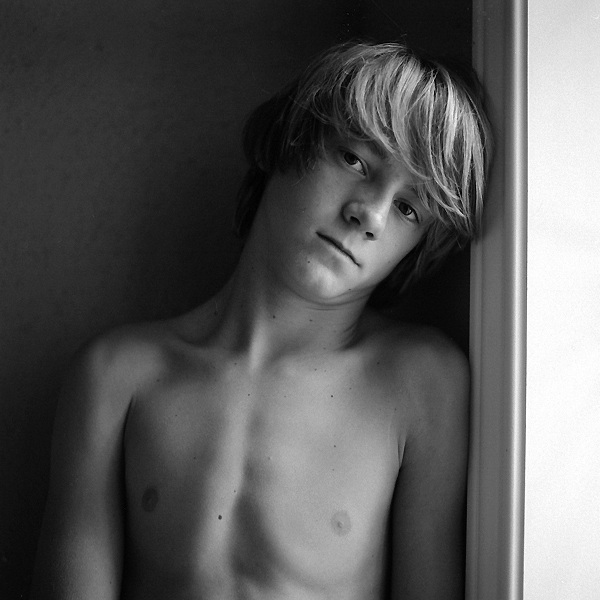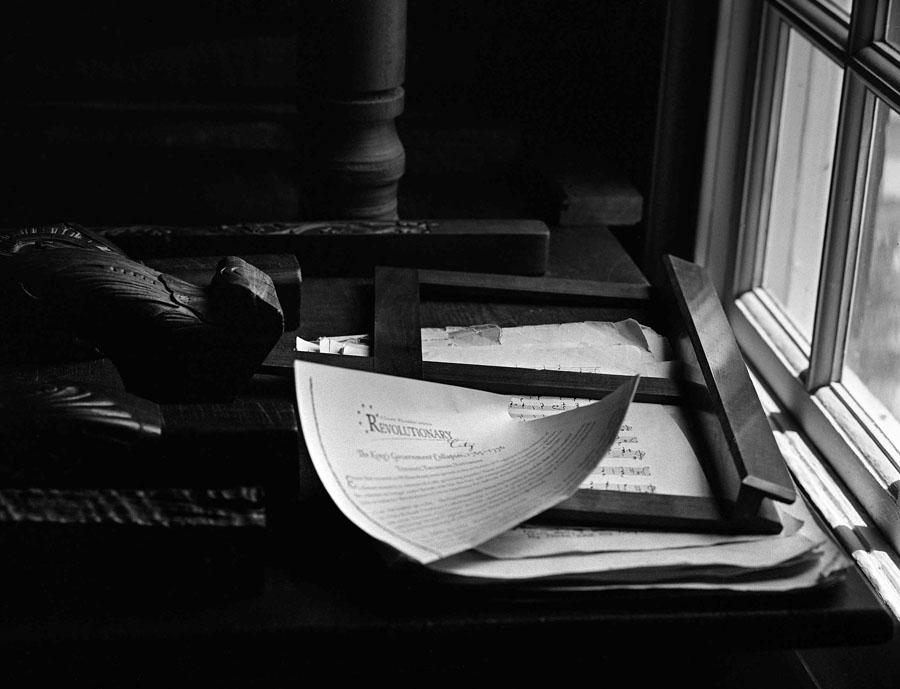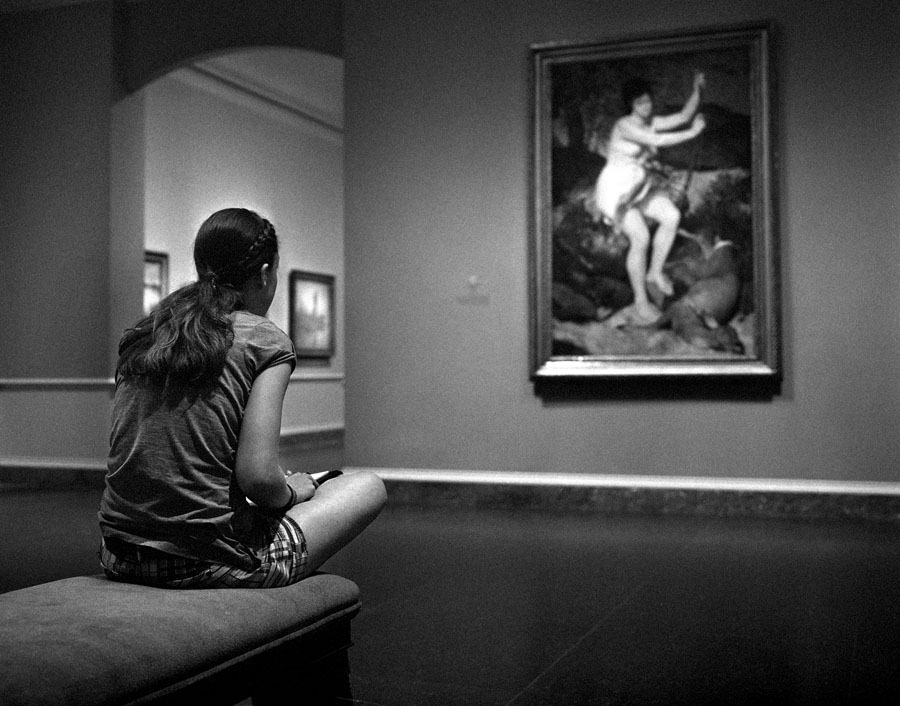Thomas78
Well-known
Hello,
do you think that using MF for available light does make sense ?
At fist I thought: Yes, because with the larger format, grain would not be such an issue as with 135.
But you have to keep in mind that in MF you don't have as fast lenses as with 135 and to get the equal DOF with 6x9 as with 24x36 you will need ot go about two steps slower in aperture.
To compensate for the slower lenses you need a faster film, e.g. 6400 at MF instead of 1600 at 135 and at this point I think you have lost any advantage of the larger format.
So now I think that MF would not give you any advantage in low light situations - contrary using both at good daylight with a normal speed film of the same iso rating.
What is your experience/opinion ?
do you think that using MF for available light does make sense ?
At fist I thought: Yes, because with the larger format, grain would not be such an issue as with 135.
But you have to keep in mind that in MF you don't have as fast lenses as with 135 and to get the equal DOF with 6x9 as with 24x36 you will need ot go about two steps slower in aperture.
To compensate for the slower lenses you need a faster film, e.g. 6400 at MF instead of 1600 at 135 and at this point I think you have lost any advantage of the larger format.
So now I think that MF would not give you any advantage in low light situations - contrary using both at good daylight with a normal speed film of the same iso rating.
What is your experience/opinion ?
FrankS
Registered User
Same as yours. MF is not the best tool for that task, IMO.
tomalophicon
Well-known
Mamiya 645 with 80mm f/1.9...
Benjamin Oliver
Established
Depends what you are shooting in available light. If you have a tripod, medium format would do very well, but I am assuming you are talking about shooting in available light hand held. In that case I think 35mm digital is the way to go, taking into account measurable quality. Although I like the look of fuji neopan 1600 and npz 800 in 35mm film. If you wanted to shoot this way with medium format, I think mamiya makes an 80mm f1.9 for their 6x4.5 system. Then get some delta 3200. I think the results would give a certain look that many would enjoy.
Roger Hicks
Mentor
I bought a Graflex XL with 80/2.8 specifically for shooting Delta 3200. Remember that you can use surprisingly long shutter speeds with big RFs: I found the XL a lot better than the 80/1.9 on the 645 (which I also had) because of the bigger neg and easier hand-holding.
Even so, as a general rule, I'd advocate 35mm for B+W and digi for colour on the basis of the balance of quality.
Cheers,
R.
Even so, as a general rule, I'd advocate 35mm for B+W and digi for colour on the basis of the balance of quality.
Cheers,
R.
kuzano
Mentor
The Mamiya Sekor 100mm f2.8
The Mamiya Sekor 100mm f2.8
The Mamiya Sekor 2.8 lens is another exemplary contendor for "as fast as it's going to get" in 6X9 MF.
A bit hard to find, but occasionally comes up on eBay, either singly or with a Press camera body.... Universal or Super 23
The Mamiya Sekor 100mm f2.8
I bought a Graflex XL with 80/2.8 specifically for shooting Delta 3200. Cheers,
The Mamiya Sekor 2.8 lens is another exemplary contendor for "as fast as it's going to get" in 6X9 MF.
A bit hard to find, but occasionally comes up on eBay, either singly or with a Press camera body.... Universal or Super 23
T
Todd.Hanz
Guest
Maybe I don't understand the question about available light, whats the alternative...flash? I use medium format like I use 35mm, I shoot only in available light, get a better grip and shoot away...
hassy

handheld with 80/2.8 on Tri-x rated at 200
Todd
hassy

handheld with 80/2.8 on Tri-x rated at 200
Todd
Brian Legge
Mentor
If you are shooting hand held at 1/30 and f1.4 with 1600 speed film and need the shutter speed, no, it isn't a good fit.
If you can use slower speeds (stationary subject, tripod, etc) or have a workable amount of light (say, f2-3.5 at 1/30 and 1600) you may have more luck. Also remember that in addition to a stopped down aperture the addition resolving power will show camera motion a bit more with a larger enlargement so a shorter exposure is idea if shooting without support.
If you can use slower speeds (stationary subject, tripod, etc) or have a workable amount of light (say, f2-3.5 at 1/30 and 1600) you may have more luck. Also remember that in addition to a stopped down aperture the addition resolving power will show camera motion a bit more with a larger enlargement so a shorter exposure is idea if shooting without support.
While shooting my project a few years ago on people at work, I favored the Bronica RF645 (with an f/4 lens) and Fuji GA645W (with f/4 lens), and mostly shot Fuji 800Z negative color in office and store interiors. Hand-held, worked out quite well. Faced with less light though, say a restaurant in evening, I'd be in a pickle.
I've also shot with the Pentax 645NII and P67II with faster lenses under the same circumstances... They were fine too but clearly bigger bulkier and noisier.
I've also shot with the Pentax 645NII and P67II with faster lenses under the same circumstances... They were fine too but clearly bigger bulkier and noisier.
Snowbuzz
Well-known
Well, theoretically, one should be able to do this with a TLR, but I've had very limited success with them. I, however, do 1/8 sec exposures with a Rollei 6008 Integral 2 (with grip) all the time and the pictures seem sharp enough to me for maybe 12x12 inch enlargements or so. Like so:

That's Pan F rated ASA 25 at 1/8 sec.
My record is handheld Rollei 6003 for 1/2 second that turned out okay. Here it is cropped:

So, it can be done. You just have to know how far you can go with a particular camera.

That's Pan F rated ASA 25 at 1/8 sec.
My record is handheld Rollei 6003 for 1/2 second that turned out okay. Here it is cropped:

So, it can be done. You just have to know how far you can go with a particular camera.
ruby.monkey
Mentor
With a Pentax 645N and a 75mm -> 105mm lens I'd expect any shot handheld down to 1/15s to be sharp enough that subject motion would be the main cause of blur; and I'd still be happy to chance 1/8s.
loplop
Member
I only recently started delving into MF, so I don't have a lot of experience with it.. But after so many years with 35mm and fast lenses, the fac that f2.8 was "fast" in MF terms threw me a bit. I ended up choosing a Rolleiflex because I had prior (ok 30 years ago) experience with a Kodak Duaflex... And the Rollei's shutter was nice and quiet like my Leica. The Hasselblad and Bronica I tried were so loud and vibe-y.
I've taken a few handheld shots at 1/8 @2.8 with my Rolleiflex that turned out quite nicely. The 'flex is a bit different to hold steadily than my Leica, so it is taking some adjustment... But the shutter is sooooo smooth. I think I'll nail 1/8 most of the time after I get the hang of it.
With ISO 400 film, that's pretty useable in most circumstances. Not after dark, but I don't suspect you're thinking of MF for that, anyway.
I've taken a few handheld shots at 1/8 @2.8 with my Rolleiflex that turned out quite nicely. The 'flex is a bit different to hold steadily than my Leica, so it is taking some adjustment... But the shutter is sooooo smooth. I think I'll nail 1/8 most of the time after I get the hang of it.
With ISO 400 film, that's pretty useable in most circumstances. Not after dark, but I don't suspect you're thinking of MF for that, anyway.
Paddy C
Unused film collector
In my experience, people have vastly differing opinions on acceptable levels of sharpness and thus acceptable shutter speeds.
My guess is that many people either aren't looking carefully, don't really care, or have very low standards, because some of the combinations I hear people shooting at are all but certain to introduce camera-shake induced blur/softness.
For example, I wouldn't shoot a rangefinder at 1/8 (unless sharpness wasn't important) never mind a TLR (which is much harder to hold steady).
But sharpness isn't always the goal.
The difficulty with any MF SLR is the large mirror and large shutter curtain. When shooting with my Pentax 67, I stick to the old rule of keeping the shutter speed faster than the lens length. I also do not shoot below 1/125 if hand-holding and do what I can to get a faster shutter speed whenever possible.
So using a rangefinder or a TLR will be better for low-light work just as rangefinders are better than SLRs in 35mm.
My guess is that many people either aren't looking carefully, don't really care, or have very low standards, because some of the combinations I hear people shooting at are all but certain to introduce camera-shake induced blur/softness.
For example, I wouldn't shoot a rangefinder at 1/8 (unless sharpness wasn't important) never mind a TLR (which is much harder to hold steady).
But sharpness isn't always the goal.
The difficulty with any MF SLR is the large mirror and large shutter curtain. When shooting with my Pentax 67, I stick to the old rule of keeping the shutter speed faster than the lens length. I also do not shoot below 1/125 if hand-holding and do what I can to get a faster shutter speed whenever possible.
So using a rangefinder or a TLR will be better for low-light work just as rangefinders are better than SLRs in 35mm.
dazedgonebye
Mentor
Mamiya 7 w/delta 3200 is my combination of choice for low light work.
The 7 is very easy to hand hold at slow speeds, the lenses are wonderful and the big negative keeps grain from being too intrusive.

Cradle of Love by SteveMPhoto, on Flickr

Revolutionary by SteveMPhoto, on Flickr

Sketching by SteveMPhoto, on Flickr
The 7 is very easy to hand hold at slow speeds, the lenses are wonderful and the big negative keeps grain from being too intrusive.

Cradle of Love by SteveMPhoto, on Flickr

Revolutionary by SteveMPhoto, on Flickr

Sketching by SteveMPhoto, on Flickr
sepiareverb
genius and moron
The Medium Format rub.
Snowbuzz
Well-known
In my experience, people have vastly differing opinions on acceptable levels of sharpness and thus acceptable shutter speeds.
My guess is that many people either aren't looking carefully, don't really care, or have very low standards, because some of the combinations I hear people shooting at are all but certain to introduce camera-shake induced blur/softness.
For example, I wouldn't shoot a rangefinder at 1/8 (unless sharpness wasn't important) never mind a TLR (which is much harder to hold steady).
But sharpness isn't always the goal.
The difficulty with any MF SLR is the large mirror and large shutter curtain. When shooting with my Pentax 67, I stick to the old rule of keeping the shutter speed faster than the lens length. I also do not shoot below 1/125 if hand-holding and do what I can to get a faster shutter speed whenever possible.
So using a rangefinder or a TLR will be better for low-light work just as rangefinders are better than SLRs in 35mm.
Yes, my standards must really be low.
The 'new' Rollei SLRs have the best damped mirrors in all the cameras I've owned, and I've just about owned all the MF SLRs at one time or another. Comparing the Pentax 67 (which I own) mirror-slap to a Rollei 6008AF or Integral 2 well, maybe you should try one.
Again, it's all very camera-dependent or person-dependent. People with benign essential tremor won't do as well. Btw, as far as I can tell, the people on this forum make pictures of quite a high standard generally, irrespective of shutter-speed.
T
Todd.Hanz
Guest
In my experience, people have vastly differing opinions on acceptable levels of sharpness and thus acceptable shutter speeds.
My guess is that many people either aren't looking carefully, don't really care, or have very low standards, because some of the combinations I hear people shooting at are all but certain to introduce camera-shake induced blur/softness.
For example, I wouldn't shoot a rangefinder at 1/8 (unless sharpness wasn't important) never mind a TLR (which is much harder to hold steady).
But sharpness isn't always the goal.
The difficulty with any MF SLR is the large mirror and large shutter curtain. When shooting with my Pentax 67, I stick to the old rule of keeping the shutter speed faster than the lens length. I also do not shoot below 1/125 if hand-holding and do what I can to get a faster shutter speed whenever possible.
So using a rangefinder or a TLR will be better for low-light work just as rangefinders are better than SLRs in 35mm.
Did ya even look at the examples posted in this thread? (and mine was shot with a big ol mirror slapping hassy').
Todd
Thomas78
Well-known
Thank you for yor comments!
With available light I think of hand hold photography at the indoors at night when my only light source is the more or (probably) less bright light from the lamp(s) at the ceiling.
In this low light situation the screen of a MF SLR or TLR is not the best thing imho - at least not for me - for precise focusing of a 80/2.8 lens at 6x6 wide open.
I think a RF might be a better solution, but exactly focusing the eyes in a portrait seems to be challenging some times.
But perhaps it is just the limitation of the RF of the Canon P which only uses superimposed, but not split imaged focusing in this low light situations and I should try other RF like my M3 or R3A.
But since I have 3 or 4 rolls of Delta 3200 in 120 in my storage I will give MF available light a some time a try - with a MF RF.
With available light I think of hand hold photography at the indoors at night when my only light source is the more or (probably) less bright light from the lamp(s) at the ceiling.
In this low light situation the screen of a MF SLR or TLR is not the best thing imho - at least not for me - for precise focusing of a 80/2.8 lens at 6x6 wide open.
I think a RF might be a better solution, but exactly focusing the eyes in a portrait seems to be challenging some times.
But perhaps it is just the limitation of the RF of the Canon P which only uses superimposed, but not split imaged focusing in this low light situations and I should try other RF like my M3 or R3A.
But since I have 3 or 4 rolls of Delta 3200 in 120 in my storage I will give MF available light a some time a try - with a MF RF.
Last edited:
Thomas78
Well-known
Did ya even look at the examples posted in this thread? (and mine was shot with a big ol mirror slapping hassy').
Todd
It looks quite sharp - what shutter speed did you use?
(I personally don't like the ergonomy of a hasselblad for hand held use.)
Paddy C
Unused film collector
Images reduced to screen size (even large screen size) can often hide slight-camera induced softness.
I see this all the time on flickr. Photographs look great until you look at the largest size and realize that it is actually soft everywhere.
I see this all the time on flickr. Photographs look great until you look at the largest size and realize that it is actually soft everywhere.
Share:
-
This site uses cookies to help personalise content, tailor your experience and to keep you logged in if you register.
By continuing to use this site, you are consenting to our use of cookies.

